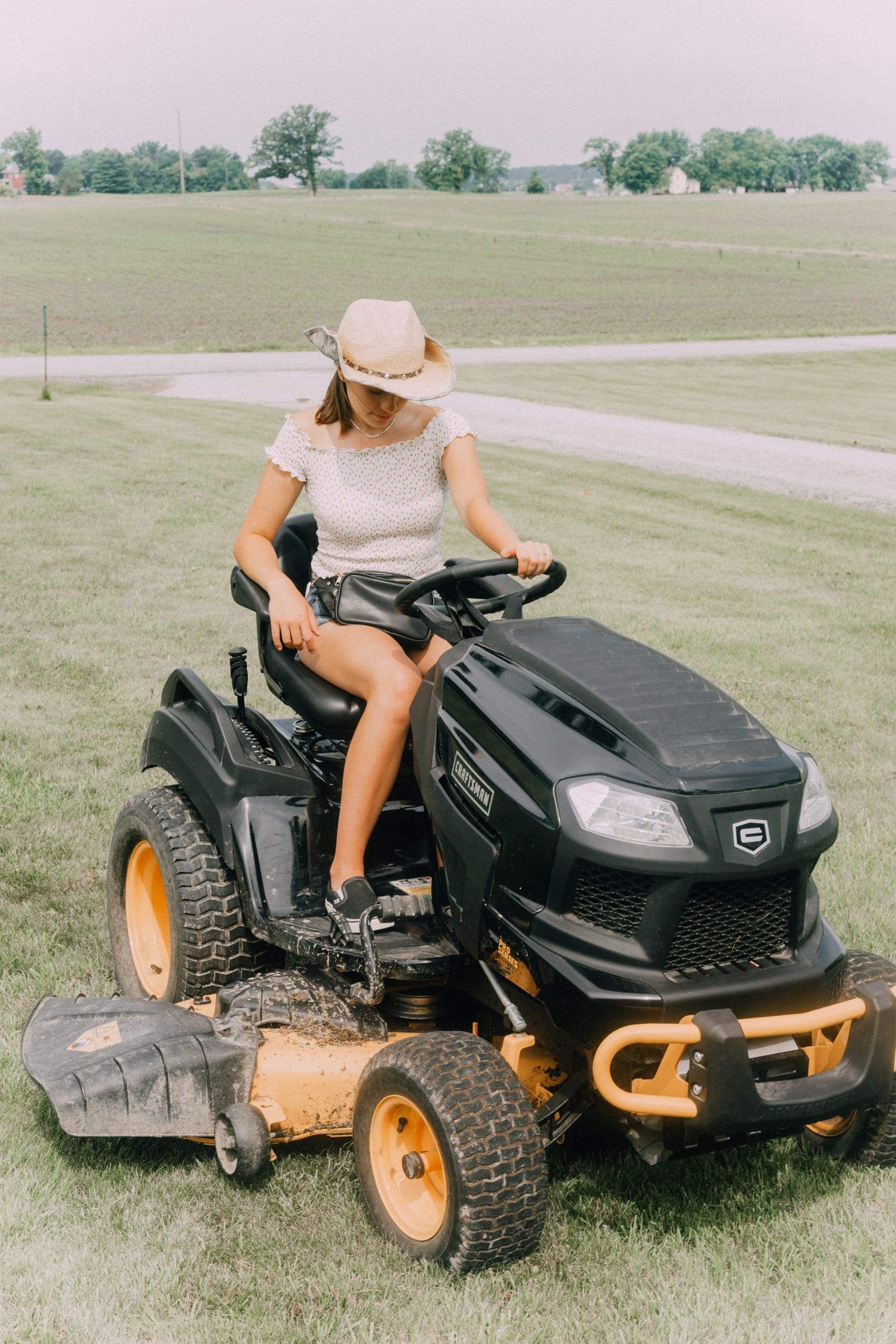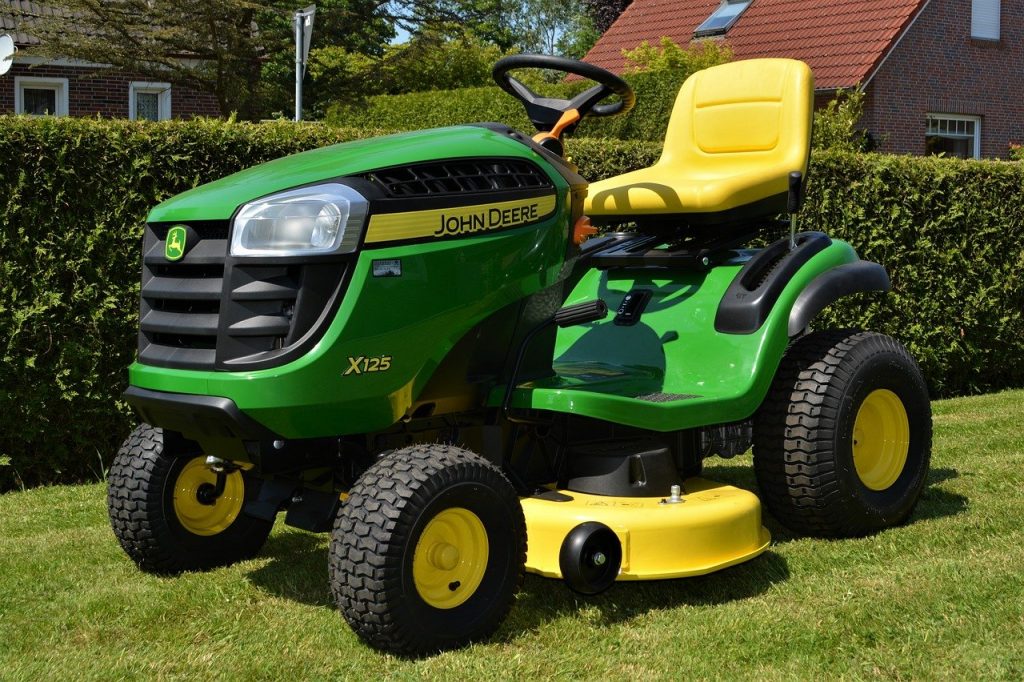Running over uneven terrain with a lawn mower without care can lead to scalping. This is where you cut the grass down so low that you leave the blades of grass exposed.
Most of the time, scalping is done accidentally and it leads to unwanted discoloration of the grass. A brown spot in your yard could be caused by a variety of things, but it could be a scalp mark. If you suspect this is the case, look for a depression in the ground near to the mark and think about your mowing pattern. Most of us have some uneven terrain in our lawn and you need to be careful with these areas, especially when mowing short. Trying to mow incorrectly can result in nasty, unwanted scalp marks.
In this article, I’ll share some useful tips on how you can prevent accidentaly scalping your lawn.
Mow properly – Don’t cut too low
 Some people want to reduce the height of their lawn once it gets into a nice and healthy state. While this can help make your lawn amazing, you want to take a cautious approach when doing this.
Some people want to reduce the height of their lawn once it gets into a nice and healthy state. While this can help make your lawn amazing, you want to take a cautious approach when doing this.
It can be tempting to cut your grass down very low with a single cut. A lot of people who aren’t interested in lawn care do this because they just want to mow their grass and be done with it. You’ll often see people wanting to cut down under a half inch or so from several inches. This is not good for your lawn; your grass is not used to it and it causes a lot of stress.
If you’re just starting out with mowing, start on a higher setting and then gradually work your way down to a height you’re comfortable with.
Pay attention to the terrain
If you’re trying to get a nice low cut, you need to make sure the terrain is mostly level so that your mower’s blade can cut the grass at a good angle.
You may have certain areas where the soil is lightly compressed resulting small humps. When you go to make a pass with your mower on these areas, the wheels and the deck will be at a different height which can cause scalping to occur. Its even more likely to happen when cutting low.
There are a few reasons why soil compaction occurs, and its normal for a lawn to have some varying terrain.
Change your mowing pattern
Consistently mowing along the same path can lead to increased soil compaction. This is especially true if you’re using a heavy riding mower.
Where possible, try to mow in different directions to reduce the impact of using heavy machinery on your lawn.
Level your lawn
If you are unable to change your mowing direction, you might want to consider levelling your yard to fill in some of these areas.
There are a few ways to do this and it really depends how deep the rut is. If you just have some loose soil, you might want to try several passes with a lawn roller. Although this isn’t going to” level your yard” as such, it may help to smooth things out a little.
The best approach is to topdress some of these areas. I’d recommend a mix of about 50% topsoil and 50% sand here.
Scalp wheels
Most riding mowers will be fitted with scalp wheels. These are small wheels that attach onto the side of the deck by a bracket.
Scalp wheels are really helpful for reducing the risk of scalping when cutting across uneven terrain.
If you do have an uneven spot in your lawn, the mower’s tire will dip down into the hole so that the deck is at an uneven height. A scalp wheel is used to help keep the deck up level and in line with the other terrain around it. Scalp wheels help to compensate and achieve more of a level cut without taking off too much grass in certain spots.
I’d recommend always going with a riding mower that has at least four scalp wheels.
Set the height of your scalp wheels appropriately
It’s important to set your scalp wheels to an appropriate height, or they won’t be effective. They might wear out faster too.
It’s ok if your scalp wheels roll sometimes when you’re cutting the grass, although you don’t want the weight of your deck to be lifted by your scalp wheels when on a level surface.
I’d recommend setting all of the scalp wheels to ¼ inch higher than a flat/hard surface.
They’re usually pretty easy to take off and put back on. You can adjust the height by selecting a hole that’s already been cut into the bracket.

Be careful on hills
One of the easiest times to accidently scalp your lawn is when you are cutting grass on a hill. The steeper the incline, the more difficult things are going to get. It’s a good idea to keep your mower deck on the highest setting in these situations. Be careful when making a turn on an incline too. Take it very slow.
Maintain tire pressure
You’ll want to check the pressure of your tires frequently. I use this gauge (link to Amazon) on my lawn tractor tires.
Keeping them at the correct pressure will help keep the deck stay level for the best cut possible. Look at the manual for the correct pressure on your mower. There may also be an indication on the side of the tire.
There are reasons to scalp your lawn
Sometimes scalping your lawn is a good idea. If you have a warm season grass like bermuda grass, scalping down very low sometime after the winter can actually be beneficial. Bermuda has very deep roots so you don’t need to worry about cutting down too low.
Scalping can helps to get extra sunlight to the grass. Studies show it helps warm season grasses to green up faster than they usually would.
Click here to find more information on how to scalp your lawn.
In Summary
If you’re seeing clumping, an uneven cut or scalp marks, then you may have a problem with your mowing.
It’s useful to remember the 1/3rd rule when cutting your grass. When you mow, only take off a maximum of the top 1/3rd of the blades of grass. You need to try and do this, even if you have tricky terrain in your yard.
Scalping your whole lawn maybe suitable at certain times of the year, but you’ll want do this only when appropriate. While warm season grasses may recover faster, cool season grasses do not tolerate scalping so you’ll want to always avoid it in this case.
While scalping maybe appropriate in some situations, scalp marks are never a good look in your lawn. These are predominately caused by cutting on uneven terrain. My lawn is really bumpy and so some scalp marks are inevitable, even when I use riding mower fitted with four scalp wheels.
You can try to level out some of these areas if you’re looking for a long-term solution.



